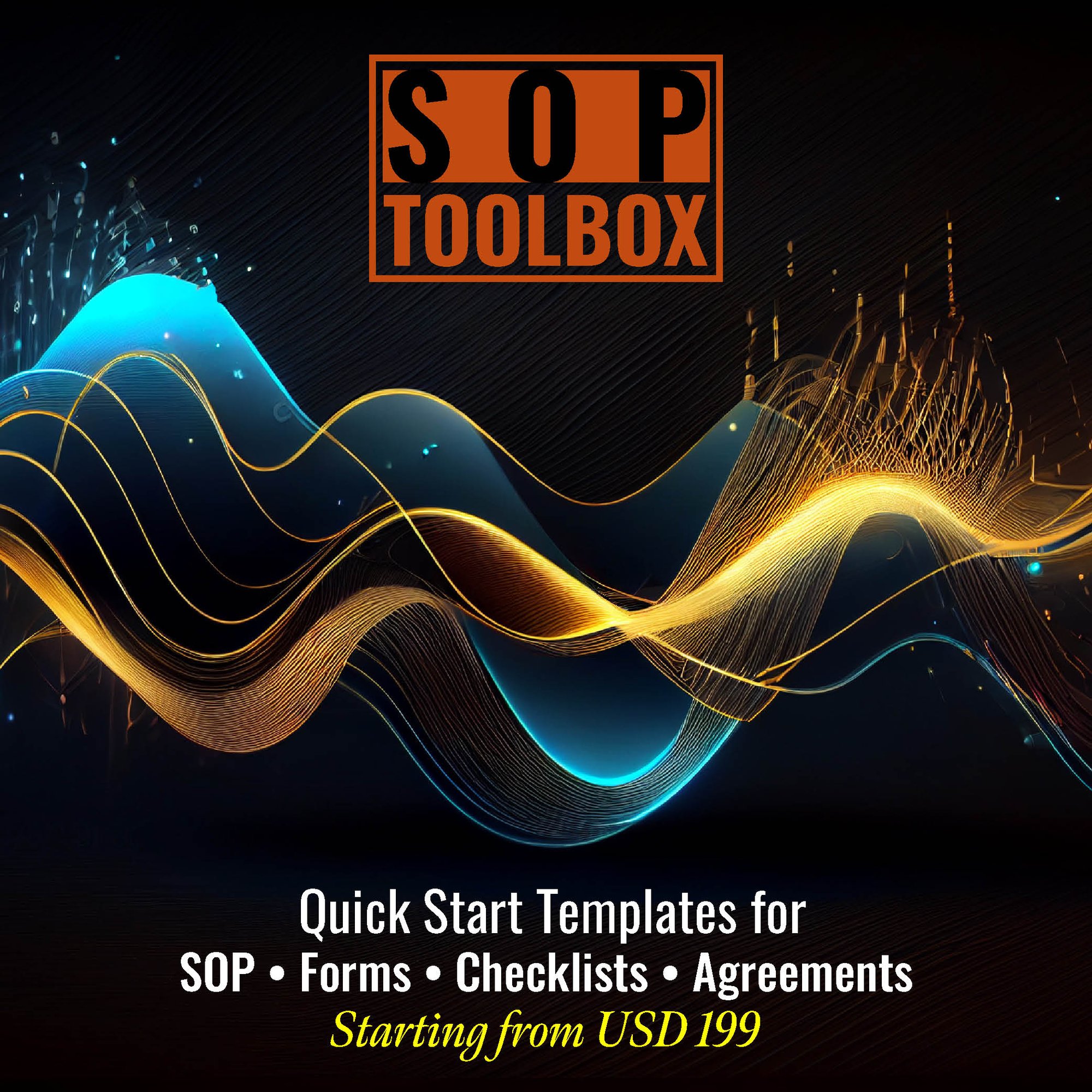The returns of implementing an SOP (Standard Operating Procedure) Manual for Sericulture, the cultivation of silk-producing insects, are multifaceted. Firstly, the manual provides a structured framework for cocoon production, silk extraction, and post-harvest processes, ensuring consistency and quality in silk production.
Secondly, it serves as a crucial training tool, ensuring that sericulturists understand and adhere to best practices, pest management techniques, and proper maintenance of silkworms. This contributes to a skilled and knowledgeable workforce in the sericulture industry.
Thirdly, the SOP manual aids in risk management by outlining disease prevention measures, biosecurity protocols, and quality control procedures. This helps mitigate potential threats to silkworm health and silk quality.
Moreover, the manual supports regulatory compliance, assisting sericulture operations in aligning with agricultural standards, environmental regulations, and legal requirements. This is crucial for maintaining the integrity, sustainability, and profitability of sericulture activities. In essence, the SOP Manual for Sericulture adds significant value by promoting consistent, sustainable, and high-quality silk production.
CLICK HERE to download the List of SOPs Document in PDF format. Please share this document with your clients, colleagues and senior officers.
Top 50 Standard Operating Procedures (SOP) for sericulture
SOP-326-001: Standard Operating Procedure for Sericulture
SOP-326-002: Standard Operating Procedure for Silkworm Rearing
SOP-326-003: Standard Operating Procedure for Mulberry Cultivation
SOP-326-004: Standard Operating Procedure for Silkworm Egg Production
SOP-326-005: Standard Operating Procedure for Silkworm Cocooning
SOP-326-006: Standard Operating Procedure for Silk Reeling
SOP-326-007: Standard Operating Procedure for Silk Filament Spinning
SOP-326-008: Standard Operating Procedure for Silk Yarn Twisting
SOP-326-009: Standard Operating Procedure for Silk Dyeing
SOP-326-010: Standard Operating Procedure for Silk Weaving

SOP-326-011: Standard Operating Procedure for Silk Printing
SOP-326-012: Standard Operating Procedure for Silk Finishing
SOP-326-013: Standard Operating Procedure for Silk Fabric Inspection
SOP-326-014: Standard Operating Procedure for Quality Control in Sericulture
SOP-326-015: Standard Operating Procedure for Sericulture Farm Design
SOP-326-016: Standard Operating Procedure for Silkworm Disease Prevention
SOP-326-017: Standard Operating Procedure for Mulberry Garden Management
SOP-326-018: Standard Operating Procedure for Silkworm Bed Preparation
SOP-326-019: Standard Operating Procedure for Silkworm Feeding
SOP-326-020: Standard Operating Procedure for Silkworm Health Monitoring
SOP-326-021: Standard Operating Procedure for Silkworm Cocoon Harvesting
SOP-326-022: Standard Operating Procedure for Cocoon Sorting
SOP-326-023: Standard Operating Procedure for Silk Reeling Machine Operation
SOP-326-024: Standard Operating Procedure for Silk Filament Quality Testing
SOP-326-025: Standard Operating Procedure for Silk Yarn Production
SOP-326-026: Standard Operating Procedure for Silk Twisting Machine Operation
SOP-326-027: Standard Operating Procedure for Silk Yarn Quality Control
SOP-326-028: Standard Operating Procedure for Silk Dyeing Process
SOP-326-029: Standard Operating Procedure for Silk Printing Techniques
SOP-326-030: Standard Operating Procedure for Silk Finishing Process

SOP-326-031: Standard Operating Procedure for Silk Fabric Quality Inspection
SOP-326-032: Standard Operating Procedure for Sericulture Waste Management
SOP-326-033: Standard Operating Procedure for Sericulture Equipment Maintenance
SOP-326-034: Standard Operating Procedure for Silkworm Farm Sanitation
SOP-326-035: Standard Operating Procedure for Sericulture Research and Development
SOP-326-036: Standard Operating Procedure for Mulberry Plant Disease Control
SOP-326-037: Standard Operating Procedure for Silkworm Genetic Improvement
SOP-326-038: Standard Operating Procedure for Sericulture Training Programs
SOP-326-039: Standard Operating Procedure for Sericulture Budgeting and Financial Management
SOP-326-040: Standard Operating Procedure for Sericulture Project Planning
SOP-326-042: Standard Operating Procedure for Silk Product Marketing
SOP-326-043: Standard Operating Procedure for Sericulture Community Outreach
SOP-326-044: Standard Operating Procedure for Sericulture Certification Procedures
SOP-326-045: Standard Operating Procedure for Sericulture Industry Regulations
Compliance
SOP-326-046: Standard Operating Procedure for Sericulture Sustainability Practices
SOP-326-047: Standard Operating Procedure for Sericulture Technology Adoption
SOP-326-048: Standard Operating Procedure for Sericulture Cooperative Management
SOP-326-049: Standard Operating Procedure for Sericulture Risk Assessment and Mitigation
SOP-326-050: Standard Operating Procedure for Sericulture Continuous Improvement for Sericulture
SOP ToolBox: If you are reading these lines, I am sure you are looking for Standard Operating Procedure guidelines or SOPs itself. In both the cases, searching in internet will not be yielding any great help. Because no company shares their SOP Development Process and certainly don’t share their SOP Documents. The best way to develop an SOP is creating one for yourself. At Fhyzics, we write SOPs day-in and day-out for companies across the globe including some of the Fortune 500 organisations. Our charge ranges from USD 5000 to USD 50000 depending upon the number of processes to be covered. Certainly, this is not affordable to small and mid-size organisations. Hence, we decided to create this SOP ToolBox to disseminate our 8-Step SOP Development Life-Cycle and best practices at an unbelievably low price.
I always say, writing an SOP is somewhere between art and science. So far you may be clueless on where to start and how to progress on an SOP? This will not be the case after you diligently go through this SOP ToolBox. We have summarised all our secrets here to get you started and to deliver a stunning SOP to your management.
-
Gossypium hirsutum – upland cotton, Origin- Central America, Mexico, the Caribbean
-
Gossypium barbadense – known as extra-long staple cotton, Origin- tropical South America
-
Gossypium arboreum – tree cotton, Origin- India and Pakistan
-
Gossypium herbaceum – Levant cotton, Origin- Africa and Arabian Peninsula
-
Moriculture – Moriculture is the process, where mulberry leaves are cultivated.
-
Silkworm rearing – In this process, silkworms are promoted for growth by using various techniques.
-
Silk reeling – In silk reeling process, the silk filaments are extracted from the silkworm cocoons into silk filaments.
- Selection of Site
- Soil Preparation
- Weather requirements
- Pick a variety
- Planting
- Caring
- Pest and disease control
- Harvesting
- Thread extraction
- Dyeing
- Spinning
- Weaving
- Printing
- Finishing
- Distribution
-
Tractor
-
Sprayer
-
Field Cultivator
-
Shredders and Cutters
-
Planters
-
Wheel Tractor Scrapper
-
Plough
-
Baler
-
Cultivator
-
Cultipacker
-
Rotary Tiller
-
Strip-trill
-
Chillcuring
-
Conveyor analyzer
-
Hedge cutter
-
Hedge trimmer
-
Livestock trailer
-
Mulching machine
-
Backhoe/backhoe loader
-
Front end loader
-
Skid-steer loader
-
Telescopic handler
-
Tractor-mounted forklift
-
Hay fork
-
Hay rake
-
Hay tedder
-
Winnower
-
Flail
-
Farm truck
-
Grain dryer
-
Sprinkler system
-
Center pivot irrigation
-
Hydroponics
-
Sorter
-
Other Farming Tools
- International Organization for Standardization|ISO-61- https://www.iso.org/ics/61/x/
- International Organization for Standardization| ISO 20921:2019(en)- https://www.iso.org/obp/ui/#iso:std:iso:20921:ed-1:v1:en
- International Cotton Advisory Committee- https://icac.org/
- National Cotton Council- http://www.cotton.org/
- Arvind| Ahmedabad, India| http://arvind.com/
- Ashworth| California, United States|https://hk.ashworthgolf.com/en/
- Barking Irons|New York, United States|https://barkingirons.com/
- Bombay Dyeing|Mumbai, India|http://bombaydyeing.com/
- Canterbury of New Zealand| Stockport, United Kingdom|http://nz.canterbury.com/
-
The Textile Magazine- https://www.indiantextilemagazine.in/home/
-
Textile & Apparel Magazine- https://www.textileexcellence.com/
-
Textile Insight Magazine- https://www.textileinsight.com/
-
Textile World- https://www.textileworld.com/
-
Textile Today- https://www.textiletoday.com.bd/
-
Clothing and Textiles Research Journal- http://journals.sagepub.com/home/ctr?journalCode=spctr&linkType=ABST&resid=5%2F4%2F1
-
Journal of Cotton Research | Articles- https://jcottonres.biomedcentral.com/articles
-
Cotton Farming| ScienceDirect- https://www.sciencedirect.com/topics/engineering/cotton-farming
Our SOP Templates’ clients are from the following States and Countries:
Alabama, Alaska, Arizona, Arkansas, California, Colorado, Connecticut, Delaware, Florida, Georgia, Hawaii, Idaho, Illinois, Indiana, Iowa, Kansas, Kentucky, Louisiana, Maine, Maryland, Massachusetts, Michigan, Minnesota, Mississippi, Missouri, Montana, Nebraska, Nevada, New Hampshire, New Jersey, New Mexico, New York, North Carolina, North Dakota, Ohio, Oklahoma, Oregon, Pennsylvania, Rhode Island, South Carolina, South Dakota, Tennessee, Texas, Utah, Vermont, Virginia, Washington, West Virginia, Wisconsin, Wyoming.
Afghanistan, Albania, Algeria, Andorra, Angola, Antigua and Barbuda, Argentina, Armenia, Australia, Austria, Azerbaijan, Bahamas, Bahrain, Bangladesh, Barbados, Belarus, Belgium, Belize, Benin, Bhutan, Bolivia, Bosnia and Herzegovina, Botswana, Brazil, Brunei Darussalam, Bulgaria, Burkina Faso, Burundi, Cabo Verde, Cambodia, Cameroon, Canada, Central African Republic, Chad, Chile, China, Colombia, Comoros, Congo (Republic of the), Costa Rica, Croatia, Cuba, Cyprus, Czech Republic (Czechia), Democratic People’s Republic of Korea (North Korea), Democratic Republic of the Congo, Denmark, Djibouti, Dominica, Dominican Republic, Ecuador, Egypt, El Salvador, Equatorial Guinea, Eritrea, Estonia, Eswatini, Ethiopia, Fiji, Finland, France, Gabon, Gambia, Georgia, Germany, Ghana, Greece, Grenada, Guatemala, Guinea, Guinea-Bissau, Guyana, Haiti, Honduras, Hungary, Iceland, India, Indonesia, Iran, Iraq, Ireland, Israel, Italy, Jamaica, Japan, Jordan, Kazakhstan,Kenya, Kiribati, Kuwait, Kyrgyzstan, Lao People’s Democratic Republic (Laos), Latvia, Lebanon, Lesotho, Liberia, Libya, Liechtenstein, Lithuania, Luxembourg, Madagascar, Malawi, Malaysia, Maldives, Mali, Malta, Marshall Islands, Mauritania, Mauritius, Mexico, Micronesia (Federated States of), Moldova, Monaco, Mongolia, Montenegro, Morocco, Mozambique, Myanmar (Burma), Namibia, Nauru, Nepal, Netherlands, New Zealand, Nicaragua, Niger, Nigeria, North Macedonia (formerly Macedonia), Norway, Oman, Pakistan, Palau, Panama, Papua New Guinea, Paraguay, Peru, Philippines, Poland, Portugal, Qatar, Republic of Korea (South Korea), Republic of the Congo, Romania, Russian Federation (Russia), Rwanda, Saint Kitts and Nevis, Saint Lucia, Saint Vincent and the Grenadines, Samoa, San Marino, Sao Tome and Principe, Saudi Arabia, Senegal, Serbia, Seychelles, Sierra Leone, Singapore, Slovakia, Slovenia, Solomon Islands, Somalia, South Africa, South Sudan, Spain, Sri Lanka, Sudan, Suriname, Sweden, Switzerland, Syrian Arab Republic (Syria), Tajikistan, Thailand, Timor-Leste, Togo, Tonga, Trinidad and Tobago, Tunisia, Turkey, Turkmenistan, Tuvalu, Uganda, Ukraine, United Arab Emirates, United Kingdom of Great Britain and Northern Ireland, United Republic of Tanzania, United States of America, Uruguay, Uzbekistan, Vanuatu, Venezuela, Viet Nam, Yemen, Zambia, Zimbabwe.
Fhyzics supports organisations in developing the following documentations:
Standard Operating Procedures (SOPs), Work Instructions, Policies and Procedures, Process Flow Diagrams, Job Descriptions, Training Manuals, Employee Handbooks, Compliance Guidelines, Quality Assurance Manuals, Health and Safety Procedures, Risk Management Plans, Business Continuity Plans, Internal Audit Procedures, Incident Reporting Forms, Performance Management Guidelines, Change Management Procedures, Vendor Management Guidelines, Customer Service Protocols, IT Security Policies, IT Support Documentation, Disaster Recovery Plans, Operational Checklists, Data Management Policies, Confidentiality Agreements, Non-Disclosure Agreements, Employee Onboarding Procedures, Employee Exit Procedures, Performance Appraisal Forms, Employee Code of Conduct, Conflict Resolution Procedures, Product Development SOPs, Supply Chain Management Guidelines, Procurement Guidelines, Inventory Management SOPs, Shipping and Receiving Procedures, Production Scheduling SOPs, Maintenance Procedures, Equipment Calibration Documents, Environmental Compliance Documentation, Sustainability Policies, Customer Feedback Forms, Marketing Strategies, Advertising Guidelines, Brand Management Guidelines, Product Packaging SOPs, Laboratory Testing Procedures, Regulatory Compliance Documentation, Tax and Accounting Procedures, Contract Management Procedures, Legal Compliance Guidelines, Financial Reporting Procedures, Budgeting Procedures, Internal Control Procedures, Fraud Prevention Policies, Asset Management Guidelines, Purchase Order Procedures, Sales and Distribution Guidelines, Client Contracts, Customer Return Policies, Internal Communication Protocols, Vendor Evaluation Forms, Product Safety Standards, Workplace Health and Safety Standards, Public Relations Procedures, Social Media Management Guidelines, Crisis Management Plans, Employee Grievance Procedures, Privacy and Data Protection Policies, Digital Transformation Guidelines, Innovation Management Procedures, Continuous Improvement Guidelines, Strategic Planning Documents, Corporate Social Responsibility (CSR) Guidelines, Audit Trails and Records, Employee Training and Development Records, Succession Planning Documents, Talent Acquisition Procedures, Team Collaboration Protocols, Employee Benefit Plans, Workplace Diversity Guidelines, Time and Attendance Tracking, Payroll Procedures, Employee Leave Policies, Conflict of Interest Policy, Emergency Response Procedures, Environmental Impact Assessment Procedures, Transportation and Logistics Procedures, Inventory Control Forms, Warehouse Management Guidelines, Product Lifecycle Management SOPs, Customer Satisfaction Surveys, Third-Party Risk Assessment Guidelines, Technology Adoption Policies, Software Licensing Guidelines, Security Incident Response Procedures, Supply Chain Risk Management Policies, Product Recall Procedures, Food Safety Guidelines, Employee Wellness Programs, Workplace Ergonomics Guidelines.





.jpg?width=645&height=337&name=Standard%20Operating%20Procedure%20-%20SOP%20ToolBox%20(1).jpg)











